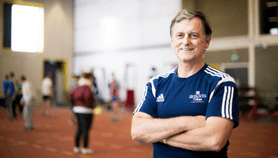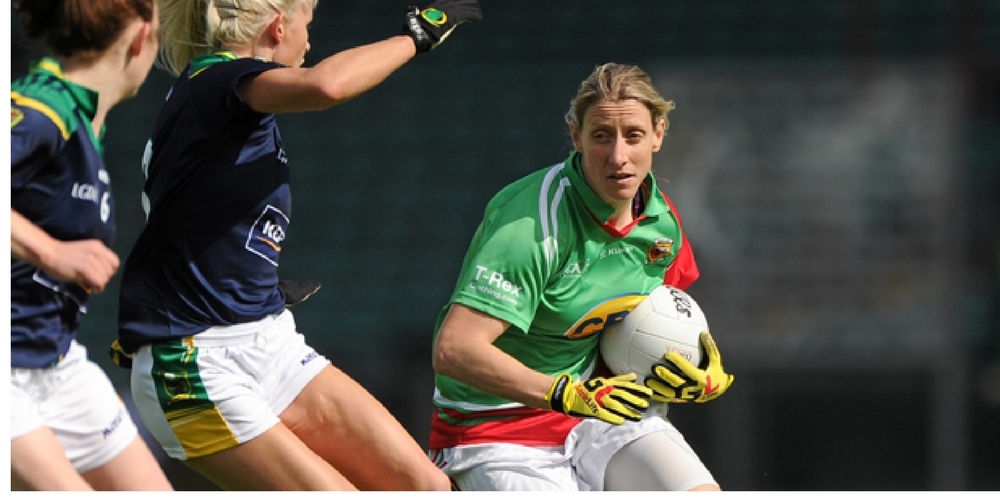In the third part of Liam Hennessy’s interview with Damian Lawlor of RTÉ Radio the discussion centered around the ‘hot’ trends in sports performance, with some actually dating back to 2 centuries ago. Dr Liam Hennessey investigates each trend and offers his expert advice on their outcomes and benefits.
Pre-conditioning or priming
This is where the player completes a specific countdown on the day of the game before the throw in. It’s a physical, physiological, skill and psychological programme of preparation. Really, it’s only for the well-trained player with years of progressive training experience. It starts with a morning priming session, an intense but short workout that ‘primes’ the player’s neuromuscular system and most importantly his hormone status to be optimal later in the day when match play occurs. We have completed many case studies on this and it works well for trained athletes across both individual and team sports. So what is the outcome? Well the player is more powerful and better able to perform physically – but within a well-controlled mental state.

Dr Liam Hennessy of Setanta College
Interestingly, the coach has a huge impact on the player’s ‘primed’ status. For example, if a coach stresses how well the opposition has been playing or what they can actually do and presents this to the team then evidence shows, that many of the players will respond negatively – based on the player’s motivation, hormone balance and performance. Also we now know that, how and what a coach says to a player in the hours before match play can either negatively or positively impact on the physiology and psychology of the player and ultimately on his or her performance. There are exceptions to this, and that is why all of these techniques have to be tried well in advance of the important championship game.
Liam’s Verdict: A must for all trained players but try it out first in advance of the big day.
Stress monitoring
Athletes and team players have been using a simple yet valid stress monitor for years – based on heart rate variability or HRV. The important point is to wear it daily and to monitor daily stress levels. This then helps the coach and athlete or player to individualise his or her training. Now this is an important point; what if stress levels are higher than normal when the athlete or player turns up to training? Will the programme facilitate a different programme to one planned for the team player? One of my athlete’s has used HRV for over a decade and it helps make decisions as to how ready he is to work hard or to reduce workload. It’s a device that has been around for a while but in our experience generally poorly used and applied.

Technology Partner of Setanta College
In addition, a partner of ours ORRECO has developed the first portable oxidative reactive stress monitor. This device measures the stress levels in the blood and now allows us to act on this metric. It simply adds to the tools we have to make better decisions as to the welfare of our athletes. I would really like to see such metrics being used to help better manage GAA players. Now with advances in technology, such devices are easily accessed and with appropriate training and a period of familiarisation by the coach they can be used to help us make better decisions at all times of the year for the individual athlete or player.
Liam’s Verdict: All teams should have stress monitoring systems in place.
‘Brain’ training
This is where the player wears a band across the head – like a set of head phones. It’s called transient direct current stimulation. A small electrical current is passed through the kit and this has been shown to be a safe technique with no side effects. Also many players report great benefits but these could be placebo related. However, we are conducting case studies on this and so far, good outcomes have been reported. I would wait and leave this technique alone until we get a lot more evidence of its effect.
Liam’s Verdict: Let’s watch and see how this develops over the coming year.
Censored Clothing

Electro shorts by Myontec, technology partners with Setanta College
Other wearable technology is really looking promising. In the not so distant future players will be wearing clothing fitted with sensors and devices that can report on not just heart rate and temperature but also muscle activation. We are currently testing Electro Myo Graph shorts. Wearing these shorts allows us to determine the activity of important muscle groups. This will allow us to see if muscles are fatiguing during match play. It will show the level of muscle activation that occurs in particular muscle groups. This has the potential to allow us to make a decision to withdraw a player before injury strikes, hamstring strains for example. So, when we combine this wearable technology with our current GPS technology and our understanding of the mechanisms and factors associated with say hamstring strain we can make strides so to speak in helping to reduce the risk of injury.
Liam’s Verdict: This has huge potential, when we get more familiar with EMG and muscle activation and fatigue, the cost of these shorts and technology will be coming down (pardon the pun) over the next year.
Genetic Testing
It’s now easy to get a genetic profile from companies advertising their analysis packages on the internet. However, this is a concern. Genetic testing has been shown to be of value in clinical medicine. However, within athletic performance , there are many issues with genetic testing. Recent studies warns both athletes and coaches from using direct-to-consumer genetic testing because of its lack of validation, replicability and involvement of a medical practitioner in the process. It is critical to note that the transfer of genetic material or genetic modification of cells for performance enhancement is gene doping. Not only does this violate regulations regarding doping but the ethical issues are many and complex. Yet the AIS does note that there are valid roles for genetic research which aim to enhance understanding of perhaps an athlete’s susceptibility to injury or illness. Also of what benefit is it to know the genetic predisposition to speed, power or endurance when team sports demand the development of so many other key attributes. Any pursuit of sport requires commitment, perseverance, sensible planning, skills development and on-going tactical awareness, training and support and the list goes on. All these are key factors in determining any performance outcome and may actually outweigh a genetic predisposition to a performance capacity.
Liam’ Verdict: Don’t waste your money, stay away from this.
Finally, we cover all the above in detail in our new Performance Science programme aimed at those who want to move to the next level in sport performance. You can log on to setantacollege.com and sign up for our introduction webinar on 24th May coming.


Leave A Comment